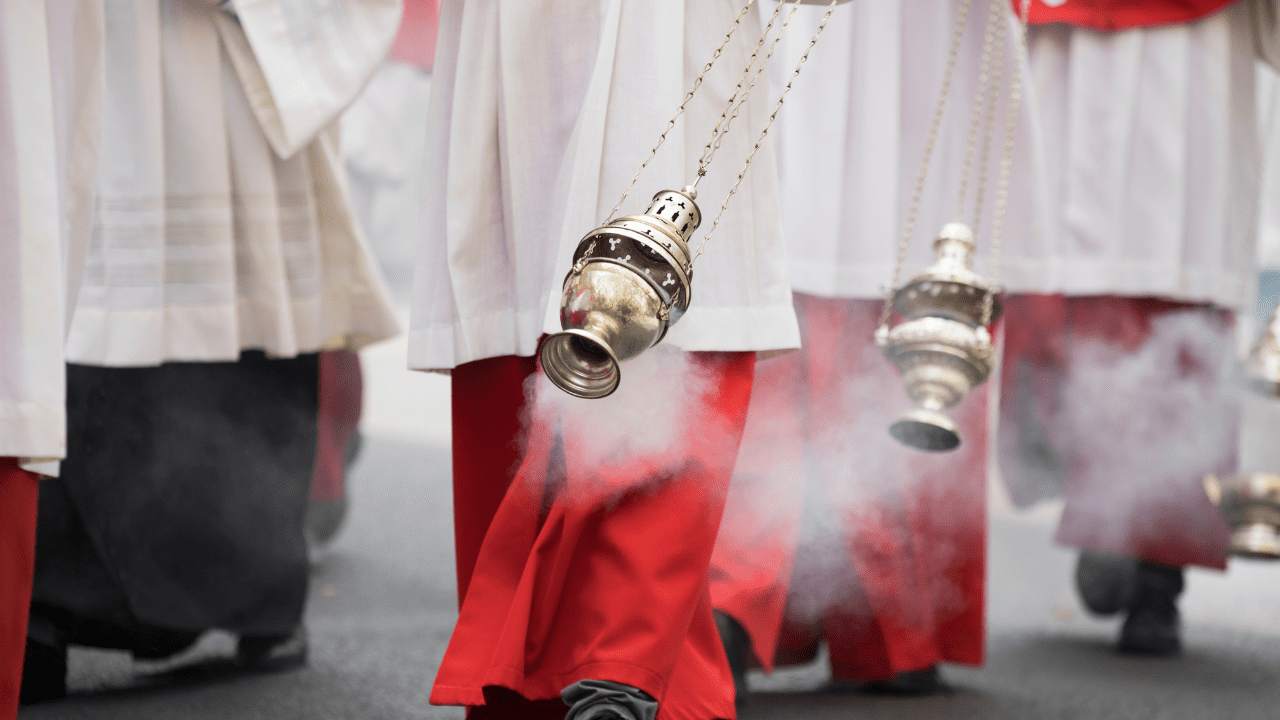Incense has a long history in the Catholic liturgy. Like so many aspects of worship, it has roots in the Jewish liturgy of the Old Testament:
“And he [Moses’ brother Aaron] shall take a censer full of coals of fire from the altar before the Lord, and two handfuls of sweet incense beaten small; and he shall bring it within the veil and put the incense on the fire before the Lord, that the cloud of the incense may cover the mercy seat which is upon the testimony” (Lev. 16:12-13).
Modern Catholics have different opinions about incense. Traditional Catholics generally love it. Certain modern types complain about the “smells and bells.” “Smells” mostly refers to incense — unless you happen to be in the cry room surrounded by a bunch of babies.
The use of incense in the liturgy is full of symbolism. We’ll focus on one of the lesser-known — and most beautiful — meanings.
Offering our wounded hearts to God
Some types of incense come from the “blood” of a tree. What do we mean? By repeatedly wounding a tree, sap is brought forth that forms the hard pellets used for incense.
We are like wounded trees. Our wounds have become hardened, dead, and useless.
In the context of the liturgy, burning incense symbolizes us opening our wounded hearts to God. The priest puts the incense on coal, which represents divine charity. Our wounds can only be healed if they are offered to God’s merciful heart. Just as the burning incense releases a sweet fragrance when coming into contact with the coal, God transforms our wounds into something beautiful.
Remember that Christ offered His suffering on the cross as an act of worship. The Mass — a representation of this same sacrifice — incorporates our wounds into Christ’s to be offered up to the Father.
Ravishing the heart of the bridegroom
In the Song of Songs 4:9, we read the following: “You have ravished my heart, my sister, my bride, you have ravished my heart with a glance of your eyes, with one jewel of your necklace.”
In ancient Hebrew, the phrase “ravish my heart” is used in extra-Biblical literature to mean stripping bark from a tree. We are back to the wounded tree! The bark is the hard outer layer of the tree that protects it. Stripping the bark makes it vulnerable. It exposes the tender layer beneath the bark where the sap runs.
Going back to the Song of Songs, the bridegroom’s heart is made vulnerable by the bride. He lets down his walls. He lets his tender underlayer be exposed — to be wounded by her beauty, plight, and vulnerability. This gives him a desire to rescue her.
Christ has revealed Himself as the Bridegroom of the Church, which is His bride. He sees the beauty of His bride and also her woundedness. Her beauty ravishes His heart and He comes to rescue her.
These are such beautiful things to meditate on. Hopefully, you never see — or smell — incense the same way again!







